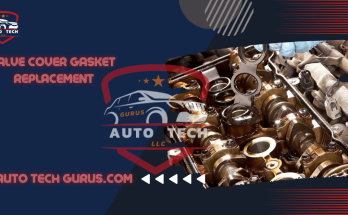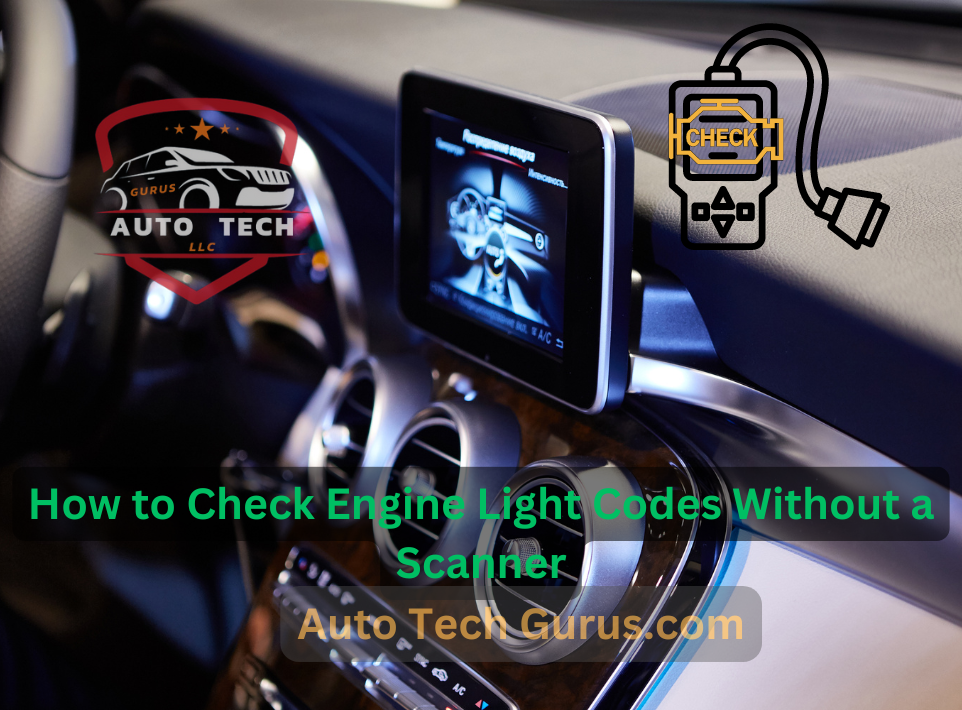Common Issues Following Tie Rod Replacement
Tie rods are crucial for precise vehicle handling and steering system functionality. However, replacing them can introduce several problems
These include wheel misalignment, uneven tire wear, and vibrations in the steering wheel. Additionally, you might notice the steering feels loose or the vehicle pulls to one side.
Such issues often stem from worn suspension components, incorrect installation, or other unresolved mechanical problems.
Understanding Inner and Outer Tie Rods in a Vehicle’s Steering System
Tie rods are essential components of a car’s steering system, divided into inner and outer tie rods. The inner tie rod connects to the steering rack, while the outer tie rod links to the steering knuckle. Together, they convert the steering wheel’s rotation into lateral motion, enabling precise control over the vehicle’s direction.
Exploring Inner Tie Rods in Automotive Steering Systems
Inner tie rods are crucial for linking the steering rack to the outer tie rods. Wear or damage to these parts can cause excessive play in the steering, jeopardizing safety by reducing control. Replacing inner tie rods requires specific tools and skills. It is recommended to have this work done by a professional mechanic to ensure precise installation and alignment, enhancing safety and performance.
Enhancing Steering Control for Accuracy and Precision
The inner tie rod plays a critical role in providing precise steering control. Its direct connection to the steering rack means that the driver’s inputs are transmitted efficiently to the wheels. This connection minimizes slack and delay, offering a responsive and smooth driving experience.
Simple Replacement of Inner Tie Rods
Replacing an inner tie rod is a straightforward process that does not require disassembling the steering rack, making it a cost-effective repair option. This component is integral to the steering system, directly connecting to the steering rack. Its efficient design ensures that the steering and suspension systems work together harmoniously, resulting in a smoother and more comfortable driving experience.
Exploring the Role and Function of Outer Tie Rods
Outer tie rods connect to the steering knuckle and are crucial for transferring motion from the inner tie rods to the vehicle’s front wheels. Worn or damaged outer tie rods can lead to steering instability, irregular tire wear, and vibrations in the steering wheel.
Professional Replacement Recommended
Although replacing outer tie rods is less complex than replacing inner tie rods, it’s still best handled by a qualified mechanic. Their expertise ensures the correct installation and alignment essential for the vehicle’s safe operation.
Enhanced Handling Performance
The connection of the outer tie rod to the steering knuckle greatly improves handling and stability. This direct link allows for precise vehicle control, especially during cornering. Like the inner tie rod, replacing an outer tie rod is straightforward and does not require a full steering system replacement, making it a cost-effective maintenance option.
Extended Tire Lifespan
Properly functioning outer tie rods are key to maintaining correct front wheel alignment. This alignment not only optimizes tire wear but also extends the tires’ lifespan. It further contributes to the vehicle’s safety and stability, ensuring a smoother, more controlled driving experience.
Common Issues to Watch for After Tie Rod Replacement
Tie rods are vital components of a vehicle’s steering system, linking the steering gear to the wheel hubs. Although replacing worn tie rods is essential for maintaining vehicle safety and efficiency, certain issues may arise post-replacement. Identifying and addressing these problems promptly ensures continued vehicle performance and safety.
- Steering Wheel Off-Center:
- Problem: If the steering wheel remains off-center after replacing tie rods, this typically indicates improper installation or inadequate alignment.
- Solution: To resolve this, perform a wheel alignment to ensure the front wheels and steering wheel are correctly centered and the vehicle tracks straight. This adjustment is crucial for safe and comfortable driving.
- Uneven Tire Wear:
- Problem: Incorrectly adjusted tie rods can lead to uneven tire wear, shortening tire lifespan and potentially compromising safety.
- Solution: Ensuring tie rods are properly adjusted is key to maintaining correct wheel alignment. If uneven tire wear is observed, it’s advisable to have a professional perform a wheel alignment to correct the issue and promote even tire wear, extending the life of your tires.
- Vibration or Shaking:
- Problem: Vibrations or shaking in the steering wheel or the vehicle after tie rod replacement can indicate misalignment or other issues within the steering system.
- Solution: Such symptoms should not be ignored as they affect driving comfort and safety. A qualified mechanic should inspect the steering system, including the tie rods, to diagnose and correct the source of the vibrations or shaking.
Prompt and correct resolution of issues following tie rod replacement is essential for maintaining the safety and performance of your vehicle. If you encounter any problems such as off-center steering, uneven tire wear, or vibrations, consulting a professional mechanic for a proper diagnosis and resolution is highly recommended. This ensures that any underlying issues are addressed effectively, keeping your vehicle in optimal condition.
Common Steering Issues After Tie Rod Replacement and Their Solutions
- Excessive Play in the Steering:
- Problem: Incorrectly performed tie rod replacements can lead to excessive play in the steering system, making steering feel loose or imprecise.
- Solution: Ensuring proper installation and alignment of tie rods is crucial for precise steering. Have a professional mechanic adjust and align the tie rods correctly to maintain safe vehicle control.
- Strange Noises While Turning:
- Problem: After tie rod replacement, strange noises during turning may indicate issues such as inadequate lubrication, worn tie rod ends, or incorrect installation.
- Solution: Address these noises promptly to prevent further damage. A qualified mechanic should inspect and, if necessary, replace or correctly install and lubricate the affected components.
- Steering Wheel Hard to Turn:
- Problem: Difficulty in turning the steering wheel post-replacement could stem from issues with the power steering system or improper tie rod end installation.
- Solution: This difficulty poses a hazard, especially during tight turns. Have a mechanic inspect the power steering system and the installation of tie rods to ensure smooth operation.
- Steering Wheel Jerking or Wandering:
- Problem: If the steering wheel jerks or wanders, this could be due to worn tie rod ends or improper adjustment.
- Solution: Immediate inspection by a professional is advised to replace worn components and adjust the tie rods properly, enhancing safety and control.
- Poor Handling or Stability:
- Problem: Incorrect adjustment of tie rods after replacement can compromise vehicle handling and stability, particularly at higher speeds or in turns.
- Solution: Proper adjustment of tie rods is essential. A mechanic should check and correct the alignment to ensure optimal handling and stability.
The Critical Importance of Proper Tie Rod Replacement
The issues highlighted above emphasize the necessity of correct tie rod replacement and the swift resolution of any resultant problems. Incorrectly addressed or unresolved issues can compromise both the safety and performance of your vehicle. It is strongly recommended to seek professional assistance from a qualified mechanic if you encounter any of these problems post-replacement. Doing so ensures that your vehicle remains safe to operate and performs optimally.
Inability to Align the Wheels:
- Problem: If wheel alignment proves impossible after tie rod replacement, it may indicate improper installation or issues with the tie rods. Misalignment can cause the vehicle to pull to one side and lead to uneven tire wear.
- Solution: Accurate wheel alignment is essential for safe vehicle operation and tire longevity. Addressing misalignment promptly will prevent uneven tire wear and ensure balanced performance.
Premature Wear of New Tie Rods:
- Problem: Improper installation or adjustment of new tie rods can result in premature wear, potentially damaging the steering system and requiring additional repairs.
- Solution: Ensuring correct installation and alignment of tie rods is crucial to avoid safety concerns and maintain the integrity of the vehicle’s steering system.
The Importance of Professional Assistance
After tie rod replacement, it is highly advisable to seek professional assistance for both the replacement and alignment processes. A qualified mechanic’s expertise ensures precise installation and alignment, preserving your vehicle’s safety, performance, and steering system health. Properly aligned and maintained tie rods are vital to your vehicle’s long-term stability and operation.
How Long Do Tie Rods Last, and How Often Should They Be Replaced?
Tie rods are a crucial component of your vehicle’s steering system, connecting the steering rack to the steering knuckles. Their primary function is to maintain precise and responsive steering control. The lifespan of tie rods varies based on factors such as driving conditions, the type of vehicle, and the quality of the tie rod parts used.
Regular maintenance, routine inspections, and timely replacement are essential for ensuring the continued reliability and safety of your vehicle’s steering system.
Average Lifespan of Tie Rods: On average, tie rods can last between 75,000 to 105,000 miles, though their longevity may be shorter under harsh driving conditions, such as rough terrain or extreme weather.
Key Factors Affecting Tie Rod Longevity:
- Driving Conditions: Off-road driving or frequently driving on poorly maintained roads can accelerate wear.
- Vehicle Type: Heavier vehicles tend to put more strain on tie rods, reducing their lifespan.
- Part Quality: High-quality tie rods typically last longer than cheaper, lower-quality alternatives.
Why Regular Inspections Matter: Scheduling regular steering and suspension inspections is vital to detecting early signs of wear. Replacing tie rods promptly when needed ensures your steering remains safe, responsive, and reliable.
Variations in Tie Rod Replacement Among Different Vehicle Types
The frequency of tie rod replacement varies significantly depending on the vehicle type, weight, driving conditions, and overall usage. Here’s an overview based on common vehicle categories:
- Passenger Cars:
- Tie rods in most passenger cars typically last between 80,000 to 100,000 miles, though this can vary by make and model.
- Light Trucks and SUVs:
- Due to their greater weight and stress on the steering system, these vehicles usually require tie rod replacements every 50,000 to 75,000 miles.
- Heavy-Duty Trucks:
- With their substantial weight and demanding use, heavy-duty trucks may need more frequent inspections and replacements, typically around every 30,000 miles.
- Off-Road Vehicles:
- Rough terrain accelerates tie rod wear in off-road vehicles. Regular inspections and replacements as needed are crucial for maintaining performance.
- Racing Vehicles:
- Racing vehicles place significant stress on their steering systems, necessitating frequent tie rod inspections and replacements for optimal safety and performance.
The replacement interval for tie rods is not one-size-fits-all. It depends on the vehicle’s design and usage. Regular inspections and maintenance are essential for ensuring the safety and efficiency of the steering system across all vehicle types.
Telltale Signs of a Failing Inner Tie Rod
The inner tie rod is a key component of your car’s steering system, connecting the steering rack to the outer tie rod. Its role in maintaining stability and precise steering control is critical. When an inner tie rod becomes worn or damaged, several issues can arise, affecting both vehicle control and safety.
Signs of a Failing Inner Tie Rod:
- Steering Instability:
- Worn inner tie rods can introduce play in the steering, leading to a loose or imprecise feel. This makes it difficult to maintain control over the vehicle.
- Uneven Tire Wear:
- Misaligned or damaged inner tie rods may cause uneven tire wear, reducing tire lifespan and potentially compromising safety, particularly in adverse conditions.
- Steering Wheel Vibration:
- A worn inner tie rod can result in noticeable vibrations in the steering wheel, reducing driving comfort and control.
- Difficulty in Steering:
- Steering may become harder to manage, especially during sharp turns or low-speed maneuvers, posing a safety risk when navigating tight spaces.
- Alignment Issues:
- Damaged inner tie rods often cause alignment problems, leading the vehicle to pull to one side or making it hard to keep it tracking straight.
Importance of Prompt Attention:
Addressing inner tie rod issues promptly is essential to ensuring safe and reliable steering. Regular inspections and maintenance can detect early signs of wear, helping to maintain the safety and performance of the steering system.
Should Both Inner and Outer Tie Rods Be Replaced Concurrently?
Replacing both inner and outer tie rods at the same time is highly recommended, even if only one appears damaged or worn. Here’s why:
- Symmetry in Steering:
- Inner and outer tie rods work together to ensure balanced and smooth handling. Replacing only one can disrupt this balance, leading to poor handling and uneven tire wear.
- Cost-Effectiveness:
- While replacing one tie rod may seem more economical initially, failing to replace both can lead to future repairs and additional labor costs if the other tie rod wears out soon after.
- Safety:
- A worn or damaged tie rod compromises steering control, especially at higher speeds. Replacing both ensures your vehicle’s safety by maintaining optimal steering performance.
To promote long-term safety and avoid future costs, it is prudent to replace both the inner and outer tie rods concurrently. This ensures that your vehicle’s steering system remains balanced, safe, and reliable.
The Cost of Replacing Inner and Outer Tie Rods
Several factors influence the total cost of replacing inner and outer tie rods. Here are the key considerations:
- Cost of Tie Rod Parts:
- The price of tie rod parts varies depending on the make and model of the vehicle. Inner tie rods are generally more expensive than outer tie rods due to their more intricate design.
- Labor Costs:
- Labor costs depend on the mechanic’s location and hourly rates. On average, replacing both inner and outer tie rods takes approximately 2.5 to 3.5 hours of labor.
- Alignment Costs:
- After replacing tie rods, a wheel alignment is often necessary to ensure proper handling and tire wear. The alignment service adds to the total cost of the repair.
Estimated Total Costs:
- Considering these factors, the cost of replacing inner and outer tie rods typically ranges from $250 to $1,250 or more. Vehicle owners should obtain quotes from reputable mechanics, factoring in the make and model of their vehicle and any necessary alignment services for an accurate estimate.
By understanding these factors, vehicle owners can ensure both the safety and cost-effectiveness of the repair.
My Ideas and Opinions on Tie Rod Replacement
Replacing both inner and outer tie rods simultaneously is highly advisable for ensuring optimal vehicle performance and safety. Tie rods play a crucial role in the steering and suspension systems, and addressing them together helps prevent potential issues that could arise from partial replacements. Any malfunction in these components can lead to serious accidents or costly damages.
Although tie rod replacement can be expensive, delaying the replacement may result in even greater long-term costs. Replacing both tie rods at once not only avoids the need for future repairs but also ensures proper synchronization of the steering and suspension systems. This proactive approach promotes both safety and cost-effectiveness in maintaining your vehicle.



